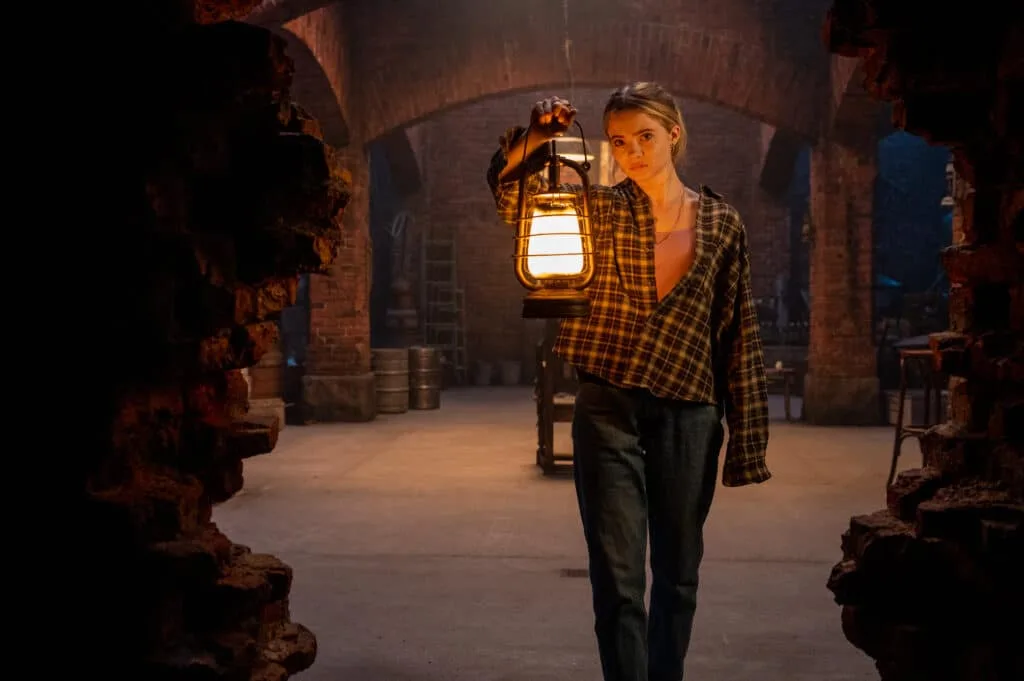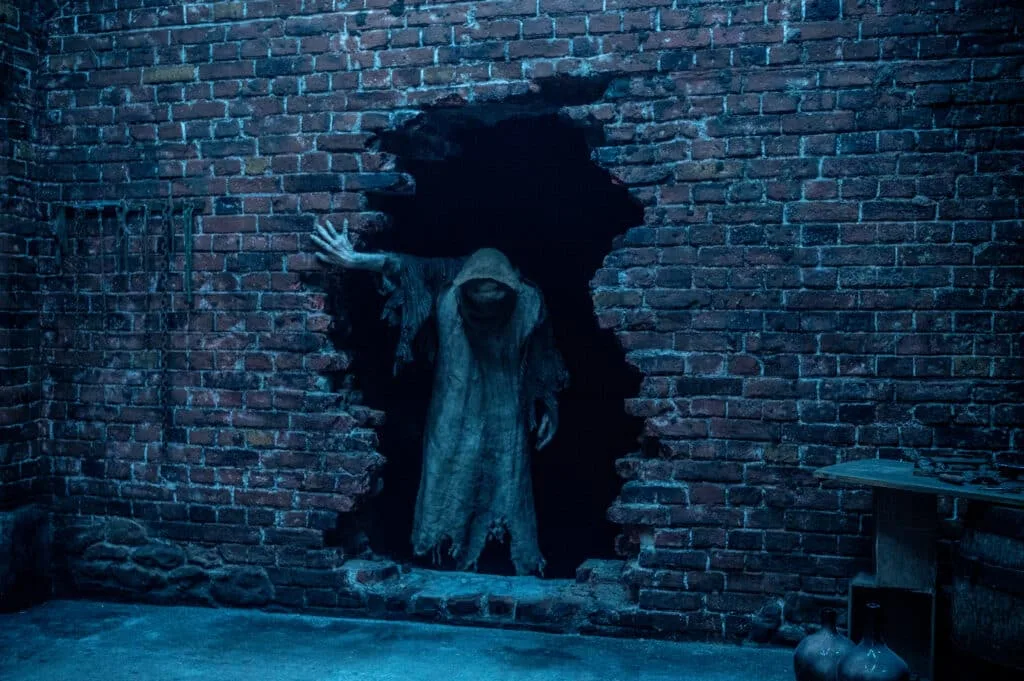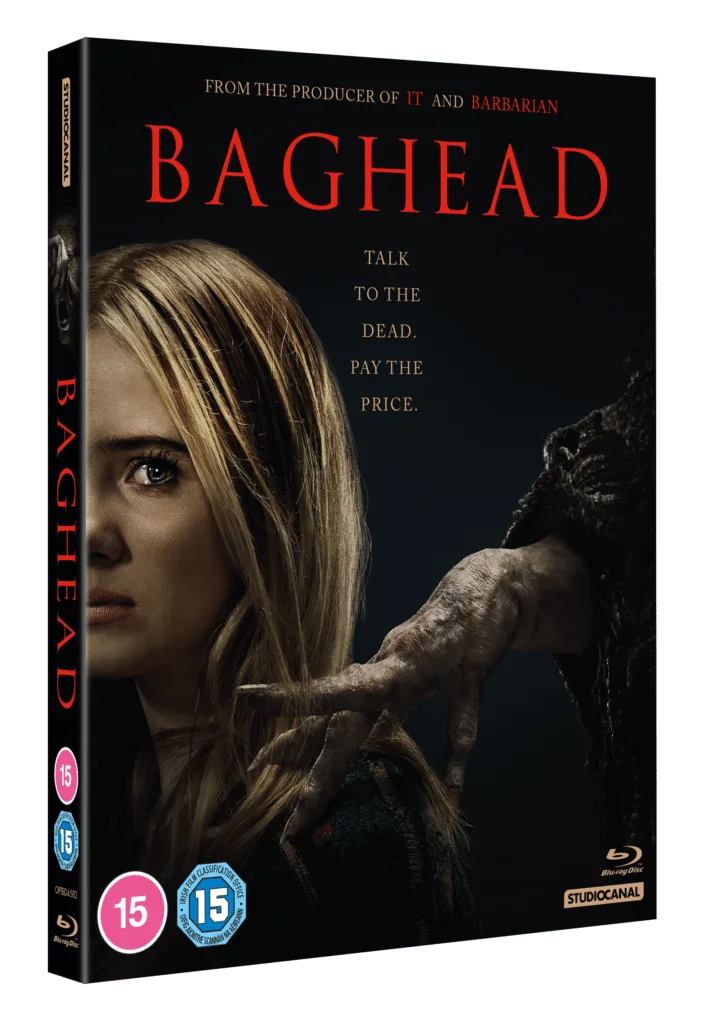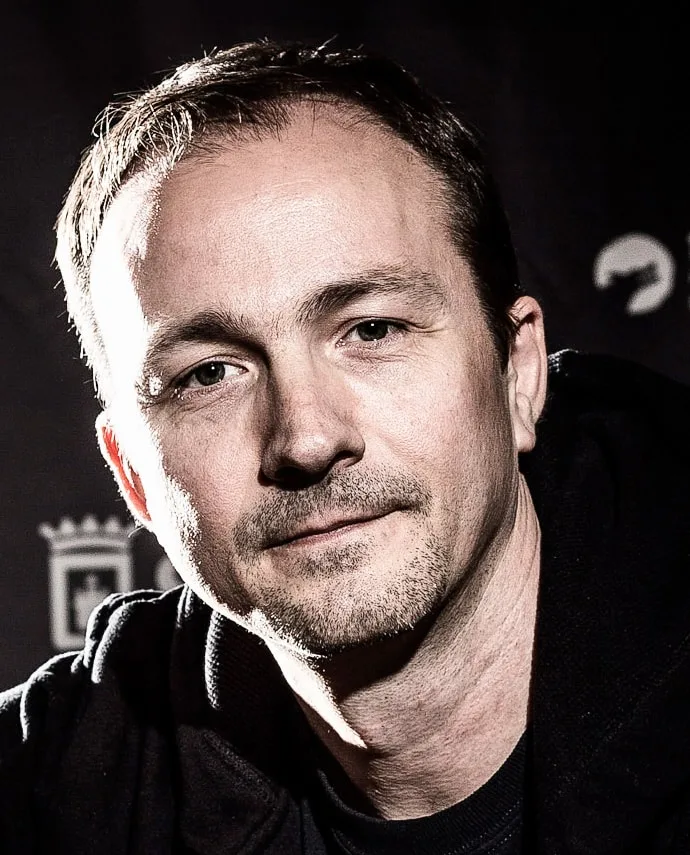
Following up from my recent review of Baghead (2023) – a broadly successful and often intriguing supernatural horror tale – Warped Perspective has been fortunate enough to have a chat with its director, Alberto Corredor, about his experiences working on this film, his first feature. Keri asked the questions: many thanks to Alberto, his team and all who facilitated this interview.
Keri/Warped Perspective: having initially made Baghead as a short film back in 2017, you decided to expand it into a feature-length: what inspired you to do this, and what were the challenges of this process? How pleased are you with the results?

AC: From the moment I read Lorcan’s script for the short film, I recognized that Baghead was a character with significant potential for a feature film adaptation. We approached the short film with this expansion in mind. Although the script was a complete story in itself, we always saw it as a proof of concept for a longer tale, exploring themes of grief, family, and closure. We invested considerable effort in designing Baghead, knowing that an iconic character would be crucial for the transition to a feature film.
There were numerous challenges in achieving this. The main challenge was crafting a story that retained the mood and essence of the short film without becoming redundant. Additionally, the transition from a short film, where I managed every aspect, to a studio-led project was substantial. It can be overwhelming, and feelings of insecurity—the well-known “impostor syndrome”—can surface, so it’s essential to be adaptable and rely on your team.
I am very proud of the film, especially considering the challenging circumstances we faced working during the COVID pandemic. Saying that, as a director, I now can only see all the mistakes and think about how I could have approached certain scenes differently. However, it’s important to accept these imperfections and apply the lessons learned to future projects.
WP: Where do you see Baghead in terms of its predecessors: did particular films or styles influence it?
AC: Visually, I discussed my references with Cale Finot, the director of photography. I am drawn to expressionism and J-Horror, as well as films like Mama and the works of Guillermo del Toro. We focused on the use of light and shadows, and the strategic use of negative space, as these elements significantly enhance the mood and tension necessary for genre stories. For the initial scene in the basement, where our protagonist encounters Baghead, I wanted to infuse a touch of Sam Raimi’s style. Raimi is a master at creating an uncanny yet amusing atmosphere, which was perfect for setting the tone for that scene.
WP: Reviews and articles about Baghead have so far tended to point out its (I’m sure entirely coincidental) similarities to another recent horror with a similar theme, Talk to Me. As an audience member this felt a little frustrating, given the fact that the short film came out years before Talk to Me. How do you feel about this as a filmmaker, first of all, and do you personally feel that these comparisons have had any effect, good or bad, on Baghead?
AC: I first learned about Talk to Me through an actor friend I met during the festival circuit for our short film in 2018. By 2023, we had been in post-production with Baghead for over a year when he mentioned that Talk to Me had a very similar premise and was quite impressive. Naturally, I knew the potential negative impact on our film, fearing that the novelty and shock factor of our character might be diminished. As a filmmaker, you must come to terms with the fact that people might independently conceive similar ideas, and sometimes the timing can be an issue. That’s simply part of the industry.
What is harder to accept, however, are the reviews or comments suggesting that we copied Talk to Me, especially considering our short film and its concept predates Talk to Me by five years. Honestly, I still haven’t watched Talk to Me; the thought of making comparisons is something I’m not ready for right now. Perhaps in a couple of years…
WP: Tell us about working with Freya Allan: she’s probably best-known in her career so far for playing Princess Cirilla in The Witcher: how did she enjoy working on a supernatural horror of this kind?
AC: Working with Freya was a fantastic experience. It was my first feature film, and it was also her first time leading one. We last discussed this during a promotional tour in Mexico. Initially, we faced some challenges, but we gradually found our rhythm. As Freya had never acted in a horror film before—despite her experience with fantasy elements in The Witcher—it took some time to determine the best approach for her character. Nevertheless, she was incredibly dedicated and succeeded in creating a compelling Iris, a character that audiences can understand and empathize with. Everyone on set could see her potential for a remarkable career. Freya is professional, a proper trooper, and has a natural rapport with the camera, which is something priceless for actors.

WP: It can be fun to ask directors to tell us something about making their film which audiences wouldn’t necessaily know about otherwise: some back story, some event, or anything of interest. Did anything unusual or interesting happen during the making of Baghead?
Looking back now, it was a crazy time to shoot a film. We just came out of lockdown and everyone wanted to shoot their projects, as we didn’t now if the restrictions would come back. We faced challenges in securing parts of our cast, crew, and even locations. Ultimately, we relocated the shoot to Berlin. The producers from The Picture Company were already there working on a Liam Neeson film, and they believed we could persuade some of the core crew to stay on and join our project. But the funny thing (well, funny now) was that [John Wick director] Chad Stahelski was shooting John Wick 4 at the same time. This meant that any location we were interested in was either unavailable to another film crew, or had become prohibitively expensive due to the John Wick effect!
WP: And finally, now that you’ve worked on a horror feature, do you have any new plans or projects on the horizon?
Oh, absolutely. I’m currently involved in a couple of projects, each at different stages. One is a military-horror story set against the backdrop of renewed Cold War tensions, inspired by the conflict in Ukraine. It draws from the mood of John Carpenter’s The Thing, taking place in a U.S. military barracks in the German mountains, adding an element of isolation in a frosty, hellish setting—complete with a monster. Mad Chance (Andrew Lazar’s production company) is producing this project, and we are currently in the process of casting.
Also, following my experience with Baghead, I realized I wanted a deeper involvement in story development, which meant taking on writing duties. I’ve completed the first draft of a screenplay in collaboration with Stephen Herman. This story feels very contemporary as it explores themes of human isolation and the challenges of finding compromises, all set in a dystopian, ultra-violent future. I like to describe it as A Quiet Place meets Mandy…
Baghead (2023) is available to buy or watch now.
